What is holding your door closed right now? Which door you ask? Well, any door. Bathrooms, bedrooms, meeting rooms, storage areas, entrance and exit doors - what do they have in common?
A door latch.
No, not the same latch. It was never going to be that straightforward.
There are as many types of latches and catches as there are types of doors. Selecting the right type of door latch is essential in providing much needed functionality and access. In this guide, we delve into the various types of door latches and their unique features.
Understanding Door Latches
Firstly, what is a door latch? It depends on who you ask. As someone with many years of ironmongery experience, my first response was that a door latch is a mechanism with a protruding, sprung bolt that holds a door in a closed position.
Of course, I’m right, but I’m also not right. Yes, a door latch usually involves a latch bolt that fits into a recess in the door frame. However, ask someone else, perhaps someone not obsessed with door hardware, and they’re likely to answer quite differently.
A door latch can be an item of hardware attached to the door that secures into a hole in the door frame, or hooks into a receiving plate to hold the door closed. It could allow you to open the door using door knobs, be used in conjunction with a pull handle, or form part of a final exit door system.
Let this article unlock the mysteries of door latch types and guide you to the right product for your facility or residence.
Key Types of Door Latches and Locks
- Mortice Latches
- Rim Latches
- Nightlatches
- Thumblatches
- Gate Latches
- Panic Latches
- Roller Bolt Latches
- Magnetic Latches
- Cam Latches
- Latch Locks
- Multipoint Latch Locks
- Deadbolt Latches
- Slam Latches
- Draw/Toggle Latches
- Turn Catch
- Cupboard Latches
- Slide Bolts
- Cabin Hooks
- Door Chains
Mortice Latches
Mortice door latches can be broken down into 5 core types but they all share similar features.
The 5 common types of mortice latches are:
- DIN standard - large case with standardised dimensions: 165mm case height, 89mm case depth, 235mm high faceplate.
- Large case - smaller than DIN latches but it is still a large case housing a small latch bolt.
- Small case/box latches - case heights of around 60mm, backset vary with model, also known as square case latches.
- Tubular latches - a very narrow casing c.23x17mm, houses a latch bolt, various lengths available. The latch bolt is usually spring-loaded but can be magnetic.
- Horizontal latches - large case door latches but with a horizontal rather than upright case, often used with door knobs.
The features that these all share are:
- A recessed external casing houses a latch mechanism and is fitted within the door’s edge.
- Can be used for both light-duty and heavy-duty applications in both commercial and residential properties.
- Perfect for internal doors where free access is required.
Rim Latches
- Mounted on the surface of the door, featuring a basic latch mechanism operated by a door knob or door handle on rose.
- Often found in traditional and rustic settings, including cottages and older homes.
- Easy to fit as no cutting out is required.
Nightlatches
- Mounted on the inside face of the door or morticed into a pocket. Nightlatches automatically lock the door when closed.
- Rim nightlatches are often used in combination with a 5 lever deadlock for added security.
- Best for additional security on residential doors.
- Can have a snib holdback function so they operate as a standard latch.
- Models with replaceable cylinders to allow for lock suiting or master keying.
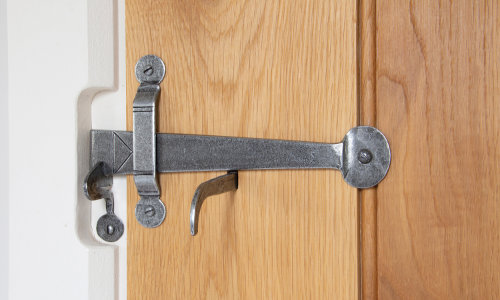
Thumblatches
- Variants include Norfolk and Suffolk latches, single latch bars, ring latches, and locking staples for bathroom doors.
- Thumb latch door handles are usually fitted to thin, ledge and brace style internal residential doors.
- Surface mounted with the latch bar fitted through a slot in the face of the door.
- Handle with a thumb-operated lever raises the latch bolt out of the keep.
- Allow for access from both sides of the door (unless using a single latch bar).
- Traditional finishes - black iron, pewter, beeswax, and brass.
Gate Latches
- Typically surface mounted and low security.
- Different mechanisms for throwing a latch bolt to secure the gate in the closed position:
○ Auto gate latch - self latching mechanism
○ Spring gate latch - sprung mechanism returns the bolt to the closed position
○ Gravity gate catch - the force of gravity keeps the gate shut
- Thumb latches can also be installed to gates, along with padbolts and bars, surface slide bolts, drop bolts, or long handled monkey tail bolts.
- Finishes suitable for external use include: galvanised, bright zinc plate, black powder coat, and stainless steel.

Panic Latches
- A variety of panic hardware products feature a single latch point to hold final exit escape doors closed.
- Can be a single push pad, long push bar, touch bar, or part of a rebated double door set like the Exidor 285.
- Panic latches can be used with panic bolts to provide multiple locking points for additional security.
- Surface mounted or mortice versions available.
- Products tested to BS EN 1125 or BS EN 179
If you’re unsure what escape ironmongery you need, why not start by reading our blog: Where is Panic Hardware Required?
Roller Bolt Latch
- Uses a roller mechanism to keep the door closed, which is released when the door is pushed or pulled.
- Suitable for light internal doors or cupboards within residential settings.
- Quiet operation and easy to install.
- Adjustable models allow for fine tuning how far the roller bolt protrudes.
- Small and large case models available, and roller bolt deadlocks, bathroom locks, and sashlocks for locking and latching in one case.
Magnetic Latches
- Employs magnets to hold the door closed, providing a secure yet easily accessible hold.
- Common in modern interior doors, offering a seamless and clean appearance.
- Mortice or surface mounting magnetic door catches.
- Used on cupboards, cabinets, and kitchen units.
- Push or pull operation to open the door.
- A variety of finished, sizes, and magnet strengths to suit a variety of doors.
Full size door magnets, or maglocks, form part of an access control system. Whilst they hold the door in the closed position, they’d be classed as an electric locking device rather than a door latch. Read our guide to selecting the right maglock as your next step on your door lock journey.
Cam Latch
- Utilizes a cam or lever that rotates as the key turns, securing the door.
- Commonly used in cabinets, lockers, and low-security areas.
- Simple and versatile, easy to use.
- Different lengths to suit a variety of door thicknesses.
- Key operated flat bolt, no handle operated latch bolt.
Latch Locks
- Mechanism: A dual locking system fitted into a recess in the leading edge of the door. It combines a retractable latch bolt and a deadbolt, providing locking and latching in one unit.
- Surfaced mounted rim locks can also have a latch and deadbolt.
- Euro cylinder locks and lever locks have models with two bolts for additional security on internal and external doors.
- Suitable for residential front doors and commercial properties.
- Bathroom locks also have two bolts within one lockcase, the latch operated by handles or door knobs, and the deadbolt by a bathroom thumbturn.
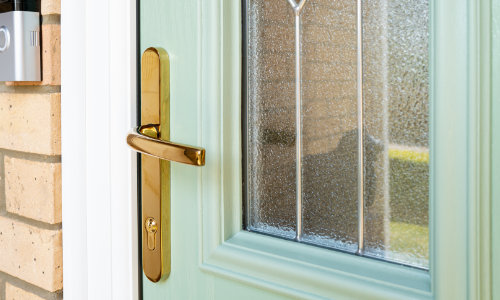
Multipoint Latch Locks
- Like small case latch locks or sashlocks, espagnolette locks can feature a latch bolt in addition to the multiple deadlock points.
- Lever operated latch or by cylinder and thumbturn.
- Mortice or surface mounted options.
- A variety of backsets, case sizes, and lock centres.
- Suitable for UPVc, composite, and timber doors.
- Commonly found on residential front doors.
Deadbolt Latches
- The mechanism features a solid bolt that moves horizontally into the strike plate in the door frame.
- The bolt is operated by a lever key or cylinder thumbturn.
- Provides a solid secondary locking point when used in conjunction with a nightlatch or tubular latch.
- Can be lever lock or cylinder lock mechanism.
Slam Latches
- Auto locking when the door is closed or ‘slammed’ shut.
- For use on cabinet or cupboard doors.
- Select a model to suit your panel thickness.
- Key operated.
- Low security solution for storage spaces.
Draw/Toggle Latches
- Models for lightweight to heavy duty applications.
- Cam mechanism with a flip-over lever or small handle grip.
- Adjustable and lockable options.
- Typically used on storage boxes, paneling, or cabinets.
- Called draw latches as the action of closing draws the two components/leaves together.
Turn Catch
- Turn catches and turn buttons are used on small cabinets and cupboards.
- A discreet, surface mounted option for latching.
- Some turn catches have a flat bar that is turned manually into a U-shaped keep. Others have a small sprung latch bolt retracted by a cabinet knob.
- Turn buttons have one component part that turns in place so when horizontal it sits in front of the door and frame, holding them in the closed position.
Cupboard Latches
- Come in a wide variety of styles including:
○ Bales catches
○ Drive in ball catches
○ Double roller catches
○ Push to open catches
○ Double ball catches
○ Spring catches
- Usually small and surface mounted
- Different sizes and finishes to suit a variety of cupboards and cabinet doors.
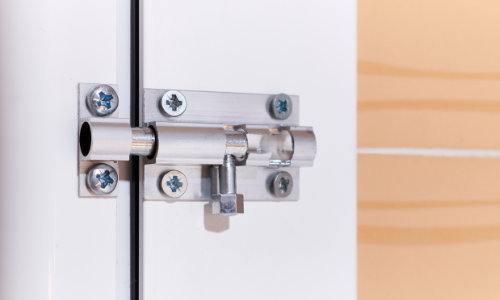
Slide Bolts
- Surface mounted or flush door bolts.
- Lengths to suit different door heights and widths.
- Cranked or straight variants.
- Suitable for internal and external use.
- A wide variety of finishes to match existing door hardware.
- Door bolts suitable for horizontal or vertical fitting.
- For use on single and double doors.
Read more in our blog where we cover 30 types of door bolt.
Cabin Hooks
- A long hook with a looped keep plate.
- Used to hold doors or gates in the open or closed position.
- Different lengths and finishes of cabin hook to suit your building.
- Standard or silent pattern options.
Door Chains
- Secondary security item to provide a secondary point of latching.
- Used on residential front doors.
- Door chains allow the door to open partially to identify visitors.
- Models to suit UPVc, timber, and composite doors.
Factors in Choosing the Right Type of Lock
- Level of Security: Assess the required security level. High-security areas benefit from deadbolts and mortice locks in addition to a standard door latch.
- Door Type and Material: The latch should be compatible with the door material, construction, and design.
- Aesthetics and Functionality: Choose a door latch that complements the door handle or knob and fits the overall style of the door.
- Mechanism: Match the spring strength to the operating furniture, or select an unsprung latch such as a thumblatch or sliding door bolt.
- Dimensions: Ensure your latch has sufficient backset to suit door hardware and door construction, plus the overall case dimensions.
Sealing the Deal: Your Door Latch Decision
The right door latch ensures both the functionality and security of a door. Whether you choose a simple cupboard catch or a DIN standard mortice door latch, it's crucial to consider the type of door and how the latch or catch will work with elements like door handles and knobs.
For advice and a range of quality door hardware solutions, contact our team today.
T: 01305 263300
E: [email protected]







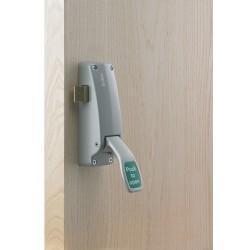

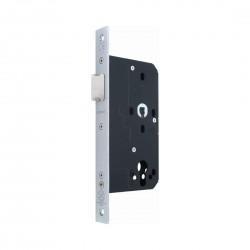
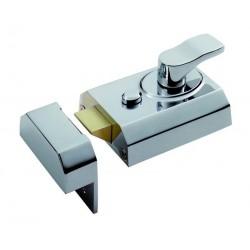
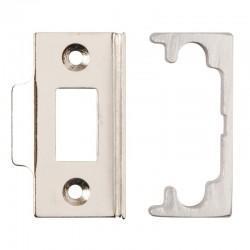
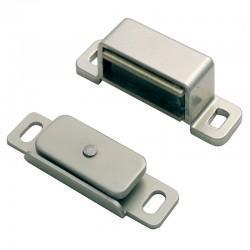
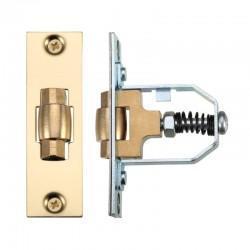

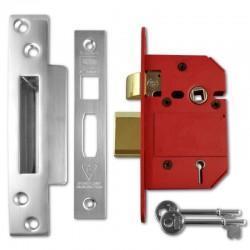
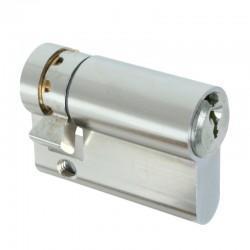
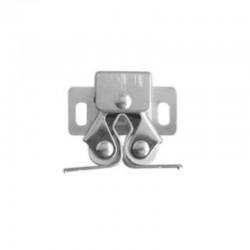
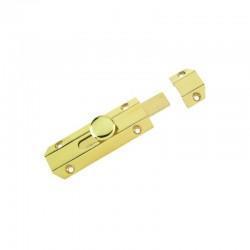
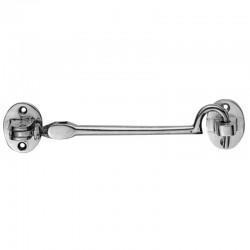
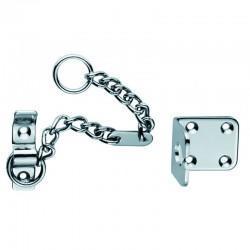
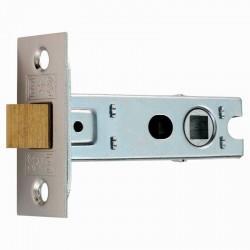




Comments